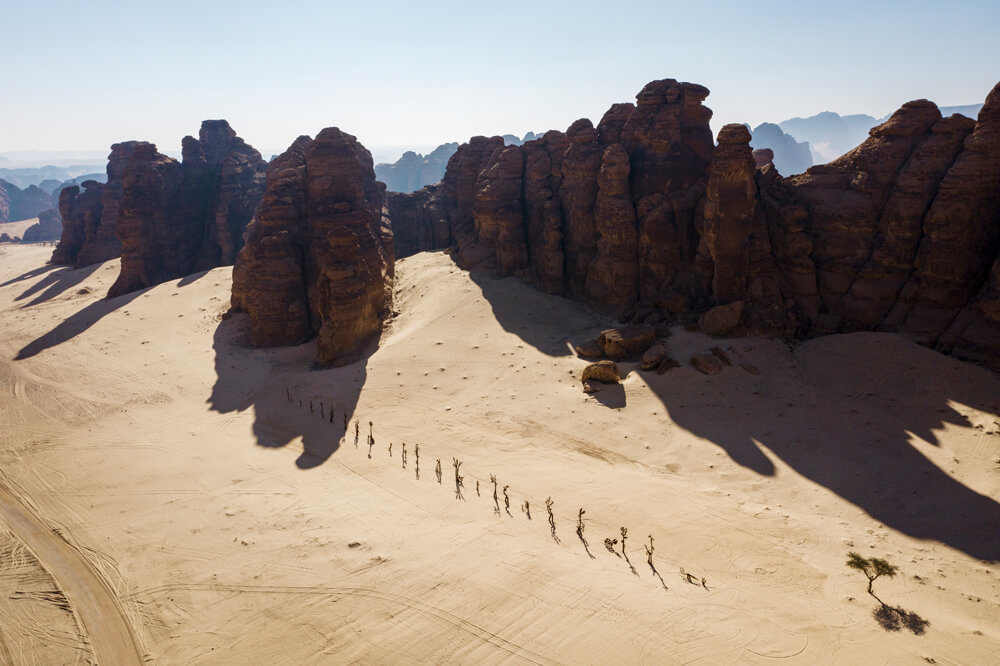
DXA Nadim Karan
Last March, the magazine’s editorial staff was first exposed to the uniqueness of the Alula Desert in Saudi Arabia. Indeed, we found ourselves lingering in a place unknown to us here in Israel. The Biennale of an artistic initiative, DESERT X, originally developed several years ago in California was held for the first time in this desert with the participation of international and local artists. The event was spectacular thanks in part to the excellence of the installations, but even more so thanks to the remarkable features of the Alula Desert.
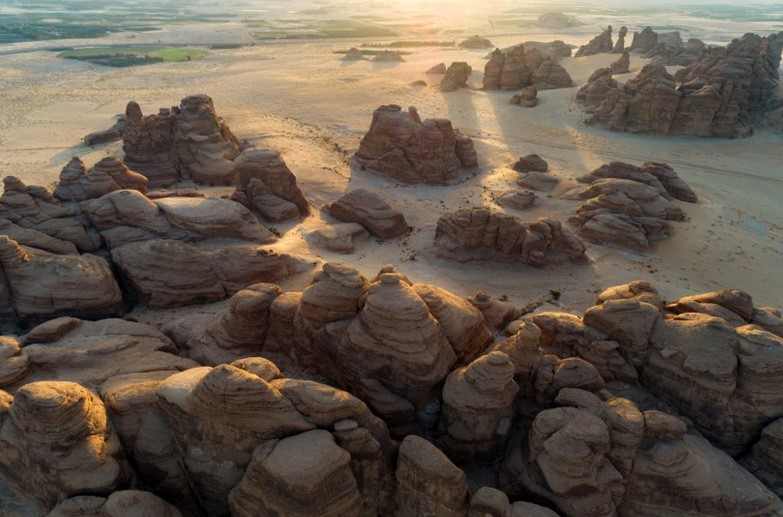
DXA Nadim Karan
The producers of the Biennale sent us impressive material on the history, geological findings and remains that can still be seen in the Alula Desert – a desert with oases, a glorious history beginning from the Paleolithic period of about 2,600,000 years ago (a prehistoric period when Neanderthal man used stone tools), and continuing into discoveries from the Bronze Age, such as tombs and tombstones, and especially impressive remains from the Nabataean period.
Here’s some background on the impressive remains, from the Nabataean period, still standing today in the Alula Desert: the Nabataean tribes that appeared from the 4th century BCE, originated in the Arabian Peninsula. They were engaged in transporting goods through the desert, first to ancient Greece and later to Rome. They mainly traded in myrrh and frankincense from Yemen and Ethiopia, and later also in various perfumes and spices, salt, expensive fabrics and even asphalt (which was used to make mummies), which were imported from India. The goods reached as far as Gaza, and from there to Egypt and later Europe. It’s worth emphasizing the Nabataeans’ unique ability to survive their journeys in the deserts by locating water sources. It is no coincidence that the “Spice Road,” as it was later called, passed through an oasis in the Alula desert that contains water cisterns dug out to store runoff. In Israel, too, on the route of the Nabataeans in the south, in the area of the high mountains, there are still impressive Nabataean remains.
The Alula Desert also contains impressive remnants of a Roman presence, such as Hegra, a large archeological site, which later became a Nabataean city. UNESCO has defined the area as a World Heritage Site. Some 110 impressive tombs have been discovered in its vicinity.
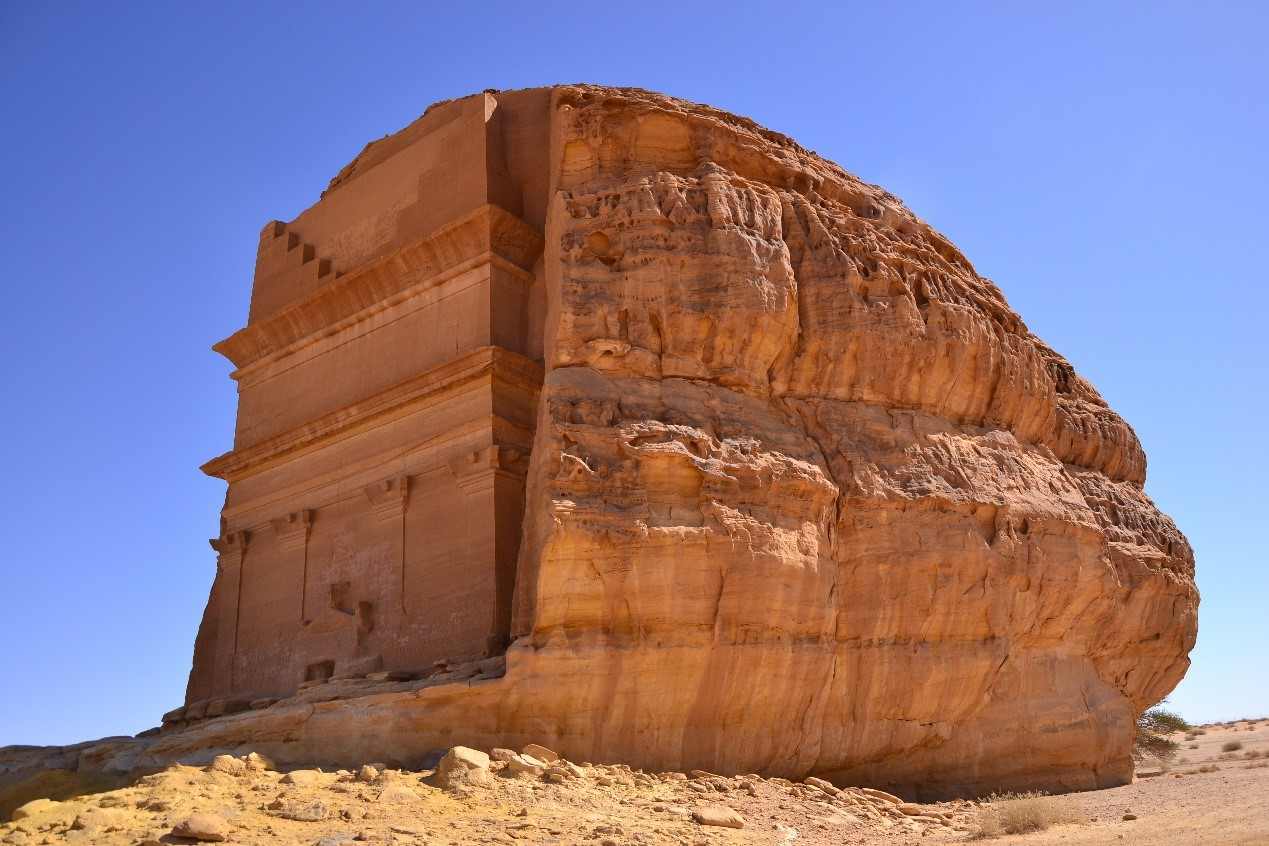
DXA Nadim Karan
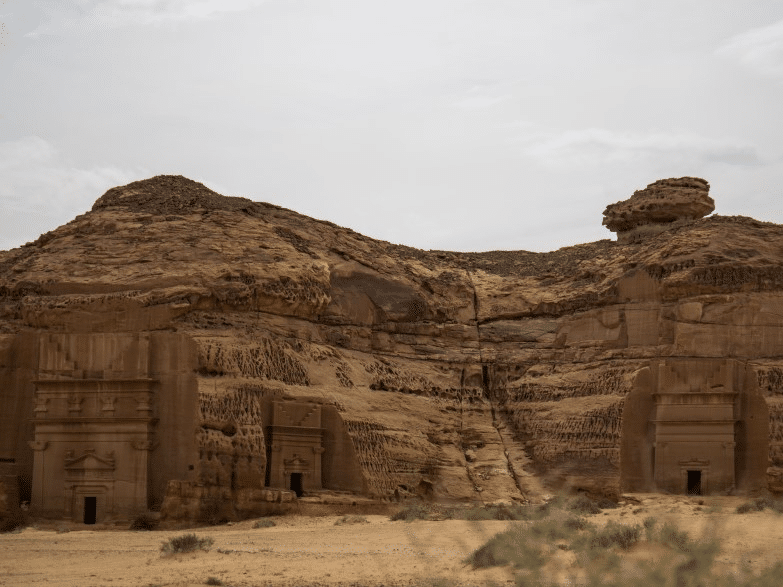
DXA Nadim Karan
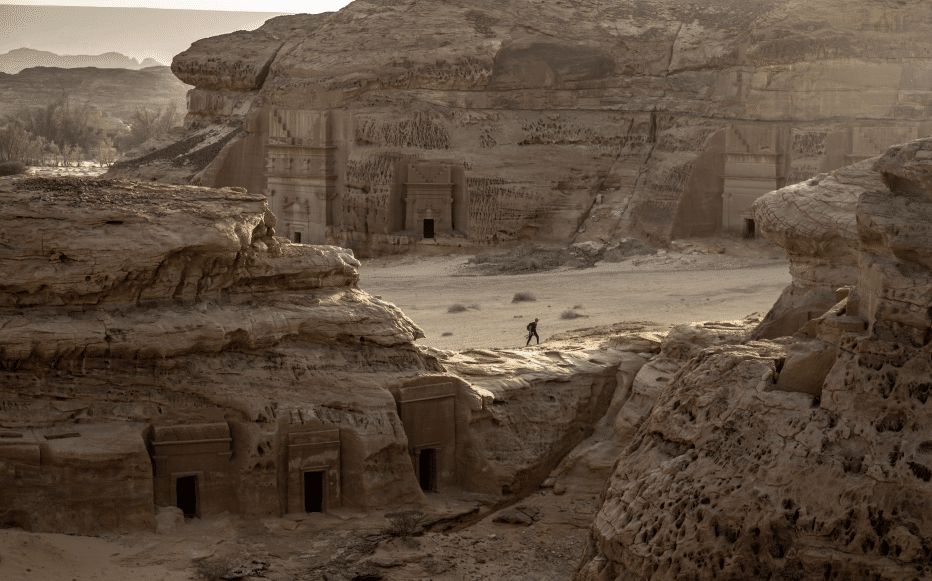
DXA Nadim Karan
In the southern part of this desert, from the Late Islamic period, are remains of the ancient city of Alula, which stand surrounded by a wall. Its houses are built of mud bricks. You can still take a walking tour of this ancient city, with its five squares and a mosque, which was once a central location for pilgrims from Damascus to Mecca.
The Alula Desert is in fact a well-preserved museum in the heart of the desert – paved roads run between the historical sites and the pearls of the oases – monumental tombs from the Nabataean period, rock-carved tombs, fascinating inscriptions written by the trade caravans, murals featuring human figures, musical instruments (such as they lyre), and animals (including camels, bulls, goats, ibexes, and scorpions).
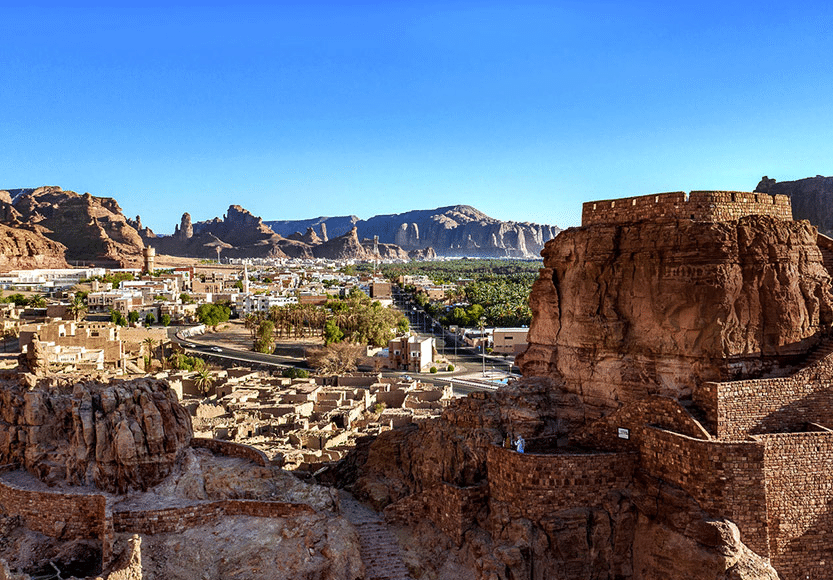
DXA Nadim Karan
The legacy of additional remains can be found in this desert – the Hijazi railway that connected Medina to Aqaba in Jordan, along whose route you can see forts, watchtowers and water sources.
How do you tour this unique desert? In jeeps, on horseback or on camels between canyons of red rocks and nature reserves, such as the Sharaan reserve that stretches out over 1500 square kilometers and boasts oasis vegetation and animals, along with sculptures carved by nature, such as the Elephant Arch. And you can also add to this unique list incredible star gazing at night.
The Alula Desert is for intense activities: races, festivals and international art happenings, including exhibitions and musical performances.
The roads in the Alula Desert are paved. Once we’re able to fly to Saudi Arabia, we can reach the Alula Desert by plane or car. And accommodations? Tourist housing of all sorts, from simple, eastern-style lodges to hotels suites and indulgent villas worthy of the rich oriental imagination of this place.
Visit the Alula Desert website, and you will only get more excited about visiting this Saudi Arabian desert.
https://experiencealula.com/en/discover-alula
The photographs in this article are from the official website of the Alula Desert, mentioned above.
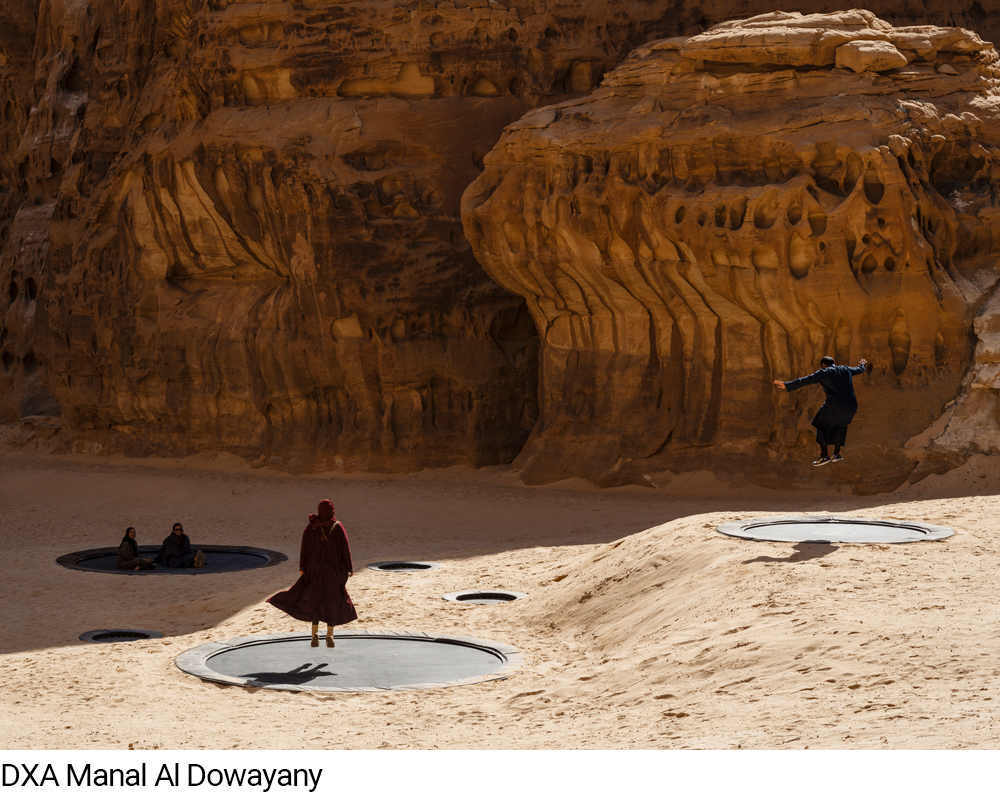
We return you, dear readers, to the article we published in March, 2020 in the Arts section. The article will give us another tour of this visit’s uniqueness, a trip to regions completely unfamiliar to us before.
DESERT X
Saudi Arabia - The Biennale in the Oasis
Surprising the Eye and Fascinating the Mind
In 2017, the DESERT X Biennale was first established in the Coachella Valley, in California’s Colorado desert, with Neville Wakefield as the Biennale’s artistic director. But the surprise came this year, when the Biennale was held in Saudi Arabia’s Alula Oasis, Al-Ala, in collaboration with the Royal Commission of Alula (RCU). Joining the artistic director were two Saudi curators – Ranem Farsi and Aya Alireza.
The Alula Oasis is located 1100 km from Riyadh, in northwestern Saudi Arabia and contains the remains of the kingdoms of Didan and the Nabataeans, who began living there in the 7th century BCE. The Spice Road, one of antiquity’s most important and well-known trade routes, passes through Al-Ala on its way from the south of the Arabian Peninsula to the shores of the Mediterranean Sea, just part of the larger network of trade routes running between the East, India, and Europe. In the oasis one finds signs of life and death, the remnants of dwellings and tombs. UNESCO has even recently recognized settlements along the Spice Road in this desert, such as Hegra, Dedan and the ancient city of Al-Ala, as cultural heritage sites.

QALAA – מבצר בו שכנו העולים למקא. נמצא ליד נווה מדבר אל-עלא
The Al-Ala Desert as the DESERT X location for 2020 represents an extremely interesting choice. Check out below images of the installations set up for the Biennale in this location and you’ll see how fascinating dialogues were created with the history and culture of the place, with nature, and especially with the power of the desert. Artists from Saudi Arabia, Arab countries and Western countries took part in the Biennale.
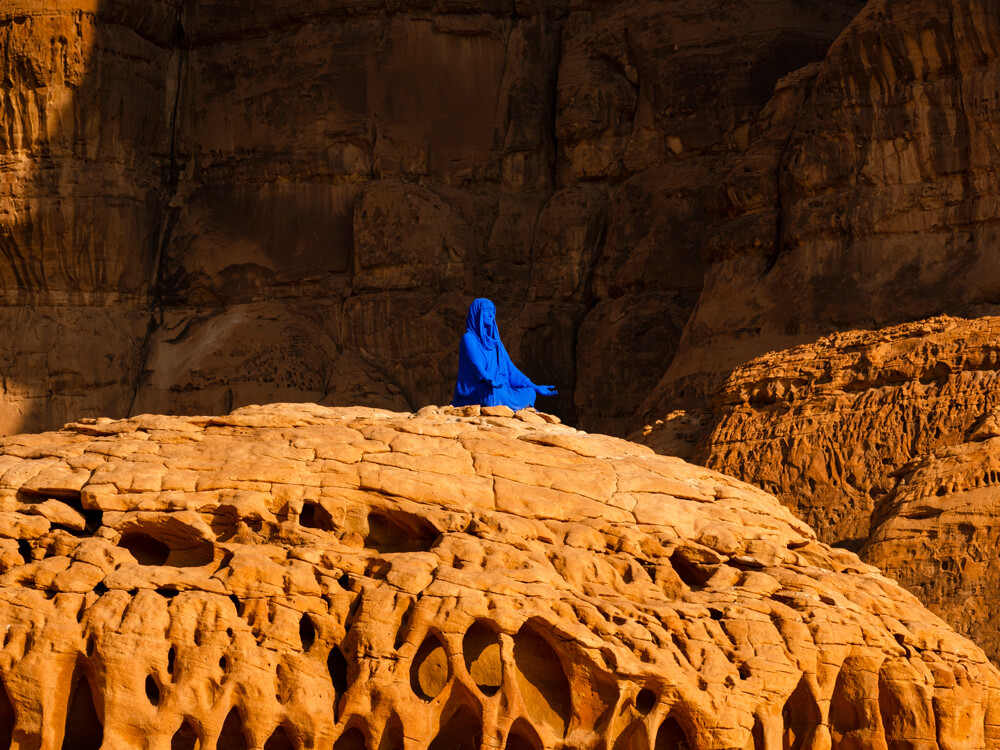
DXA Lita Alburqueque
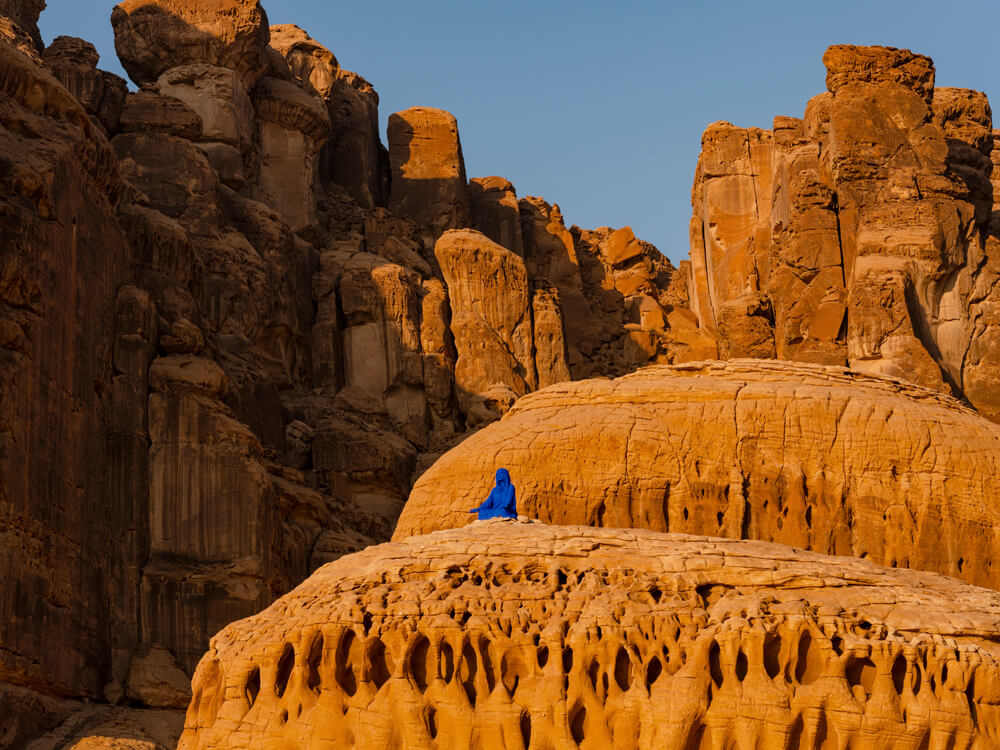
DXA Lita Alburqueque
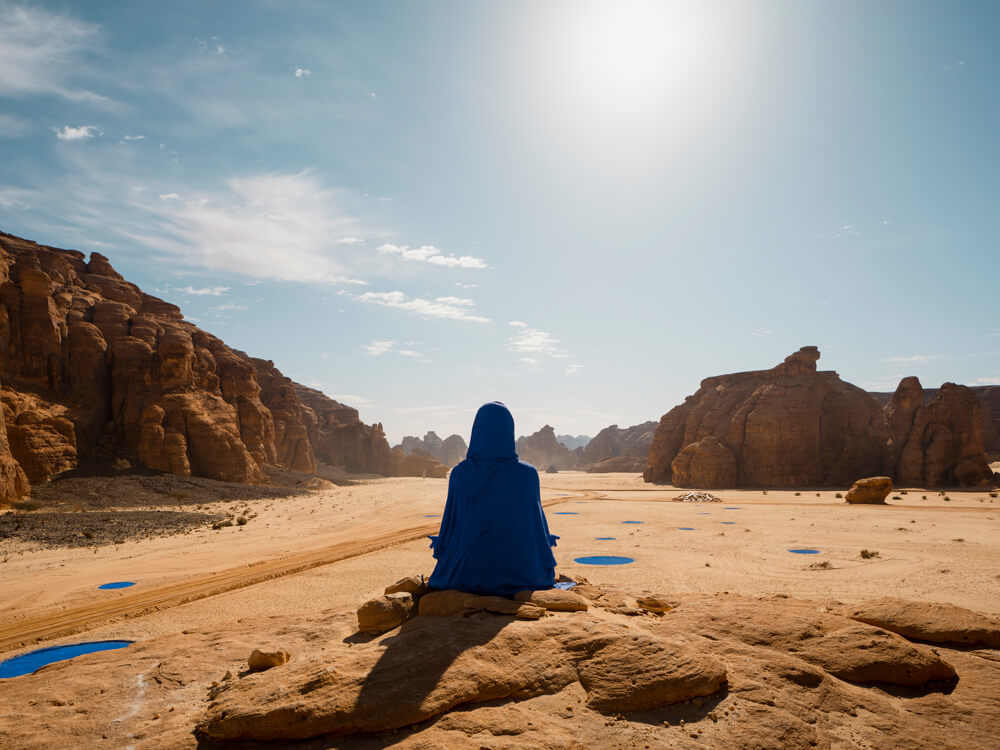
DXA Lita Alburqueque
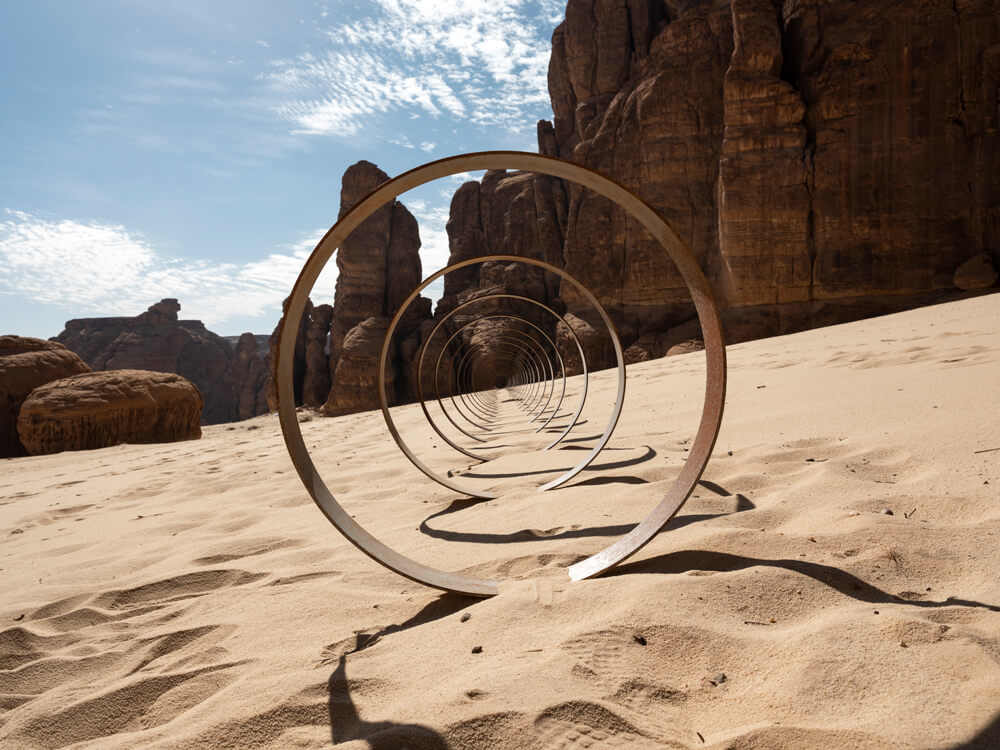
DXA Rayyane Tabet
The exposure of extraordinary landscapes with age-old cultural significance via contemporary artistic installations expands the limits of what is culturally possible, surprises the eye, and fascinates the mind.
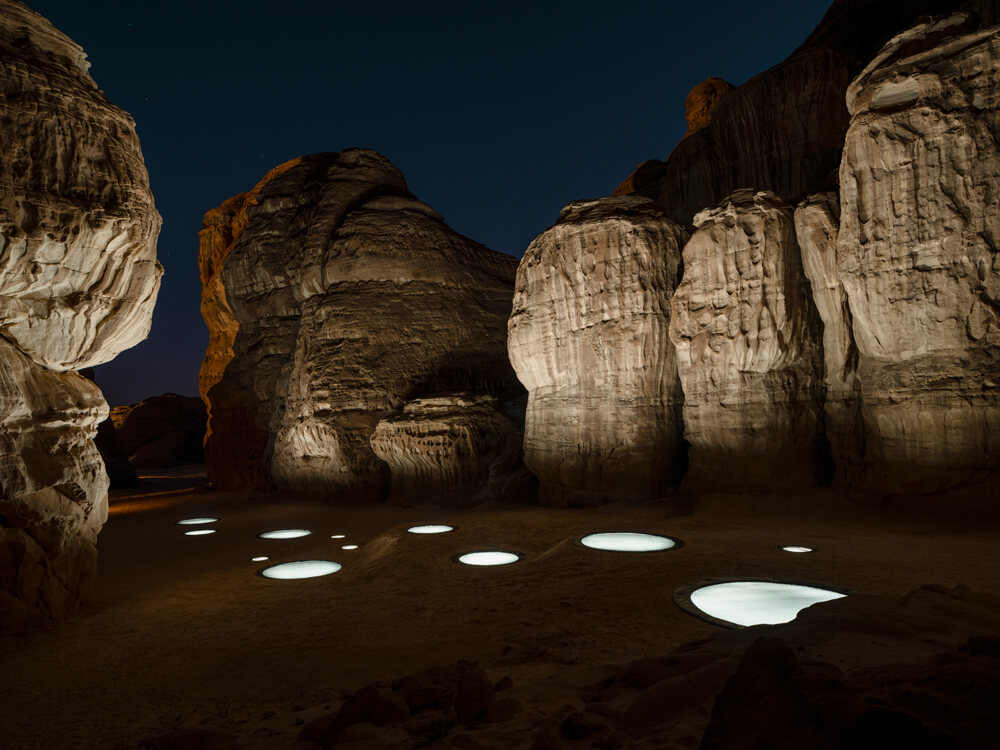
DXA Manal Al Dowayany
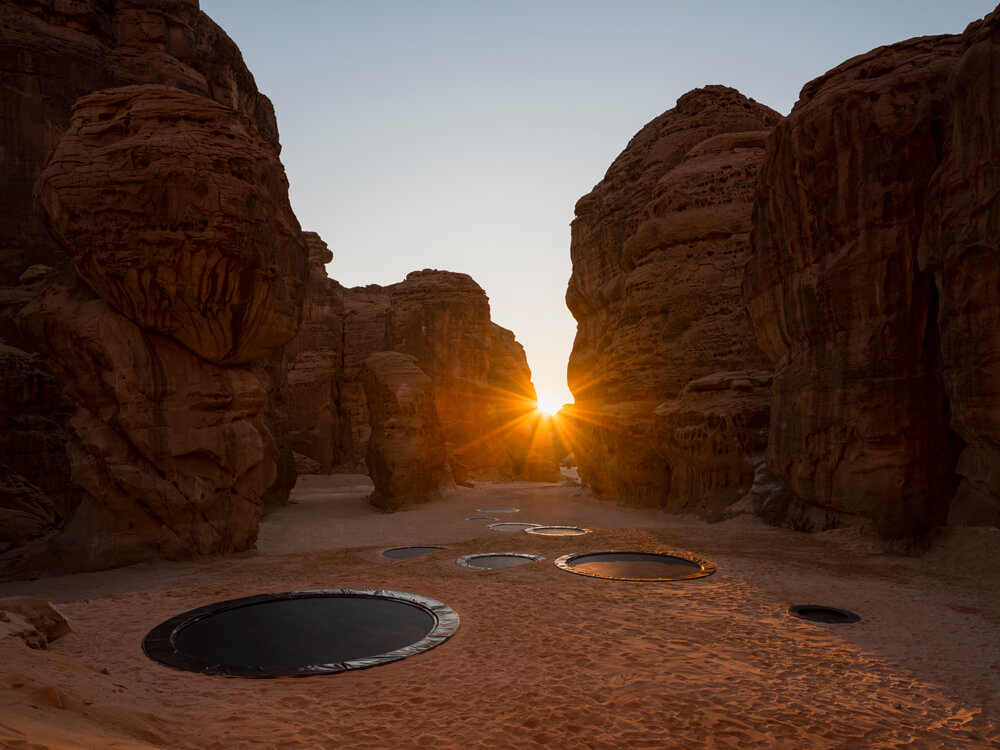
DXA Manal Al Dowayany
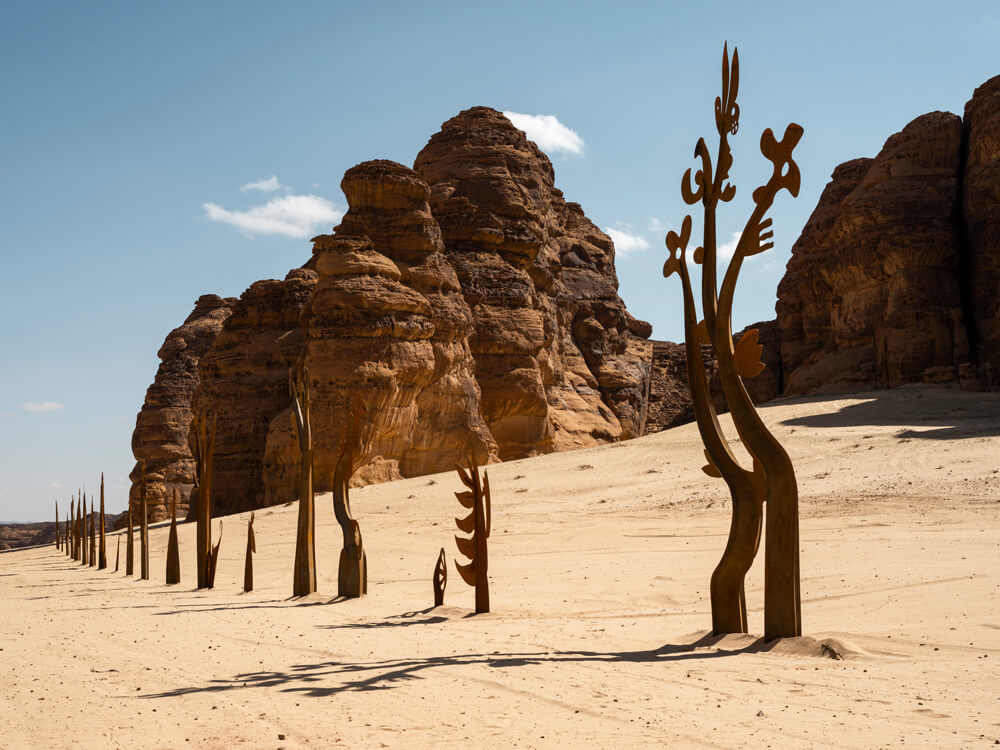
DXA Nadim Karan

DXA Nadim Karan
Note for example the installation of the prominent pyramid cut in two. Its pink color screams from its interior parts, which were built using pallets for transporting goods. This impressive installation is the work of artist Rashed Al Shashai. Or the sand and water tanks, a project of Zahran Alghamdi, as the sparkling sunlight in the water are reminiscent of fata morgana in the desert.
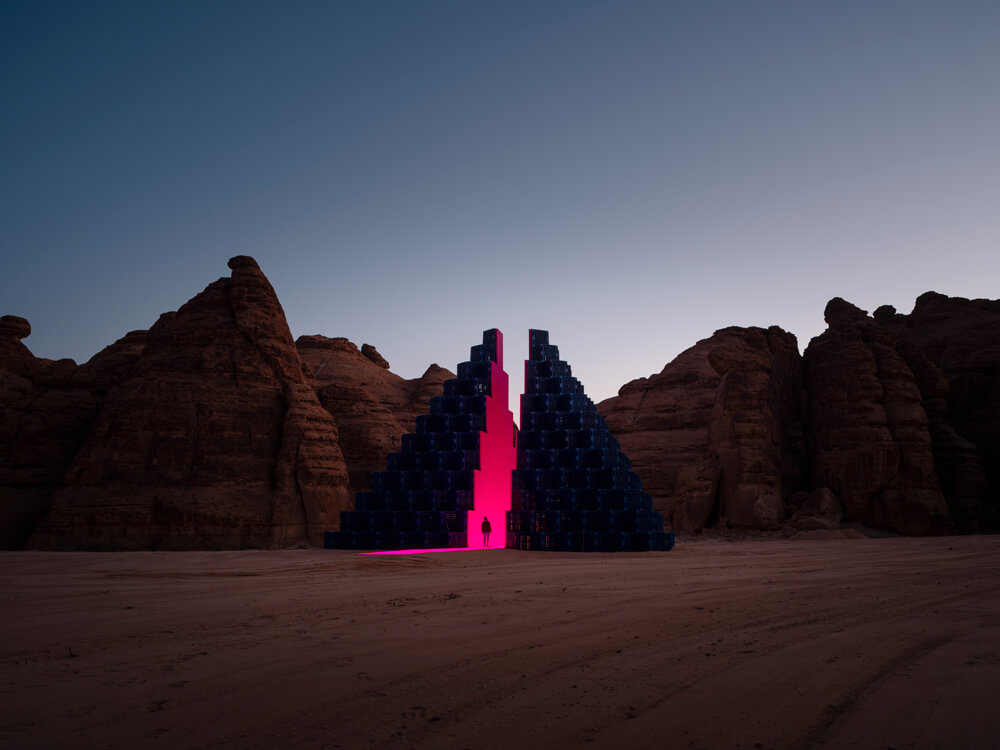
DXA Rashed Al Shashai
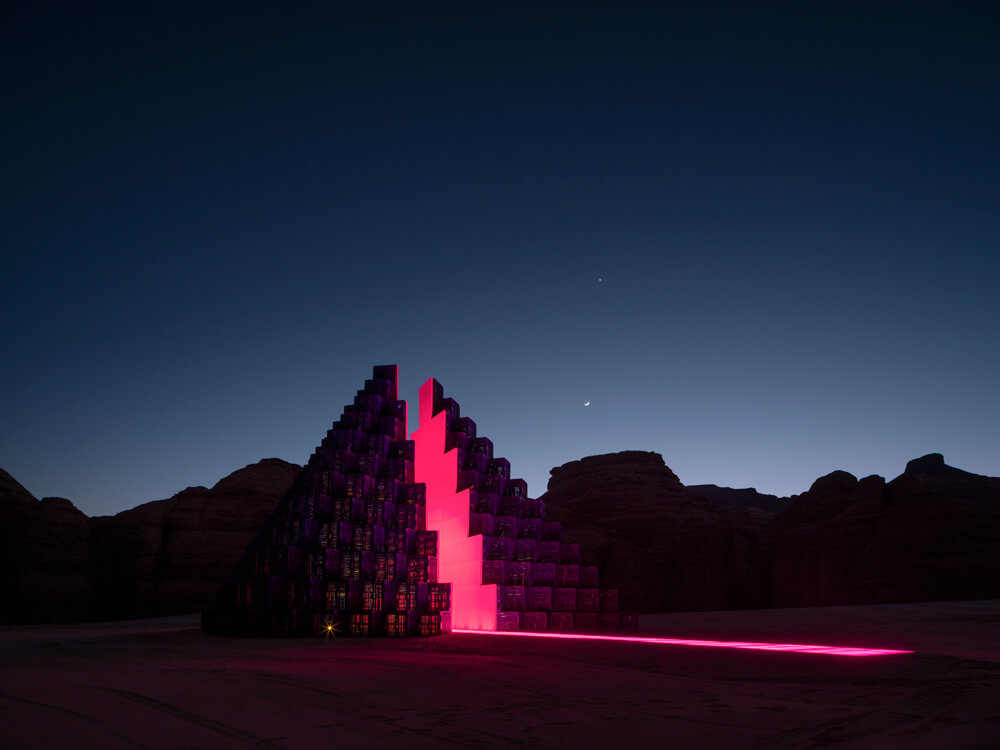
DXA Rashed Al Shashai
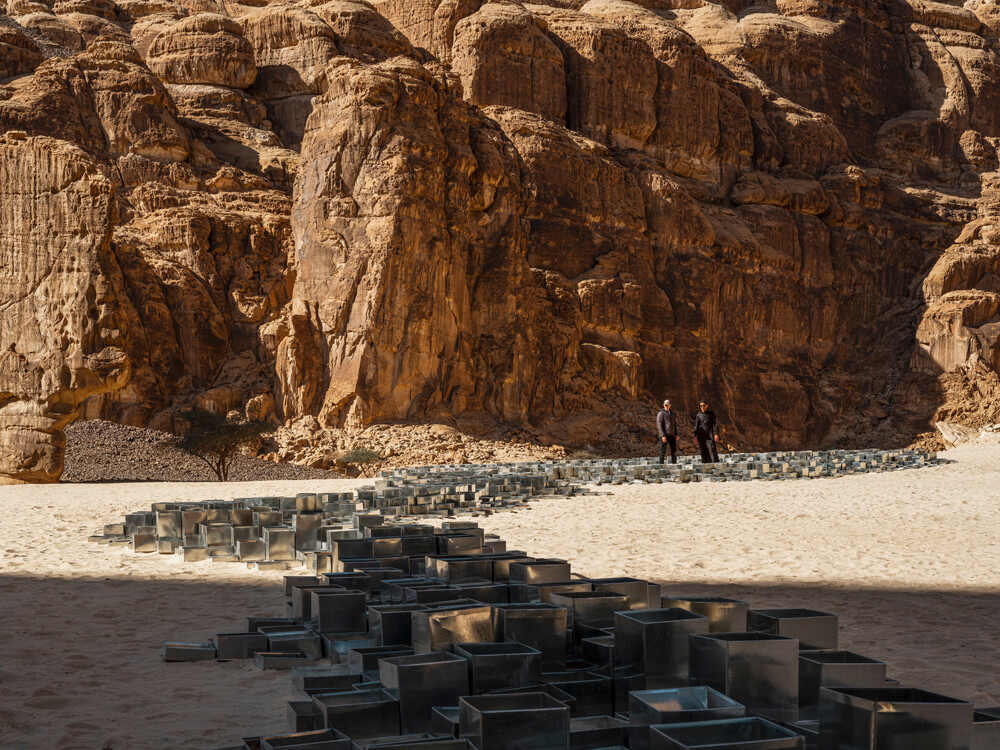
DXA Zahra Alghamdi
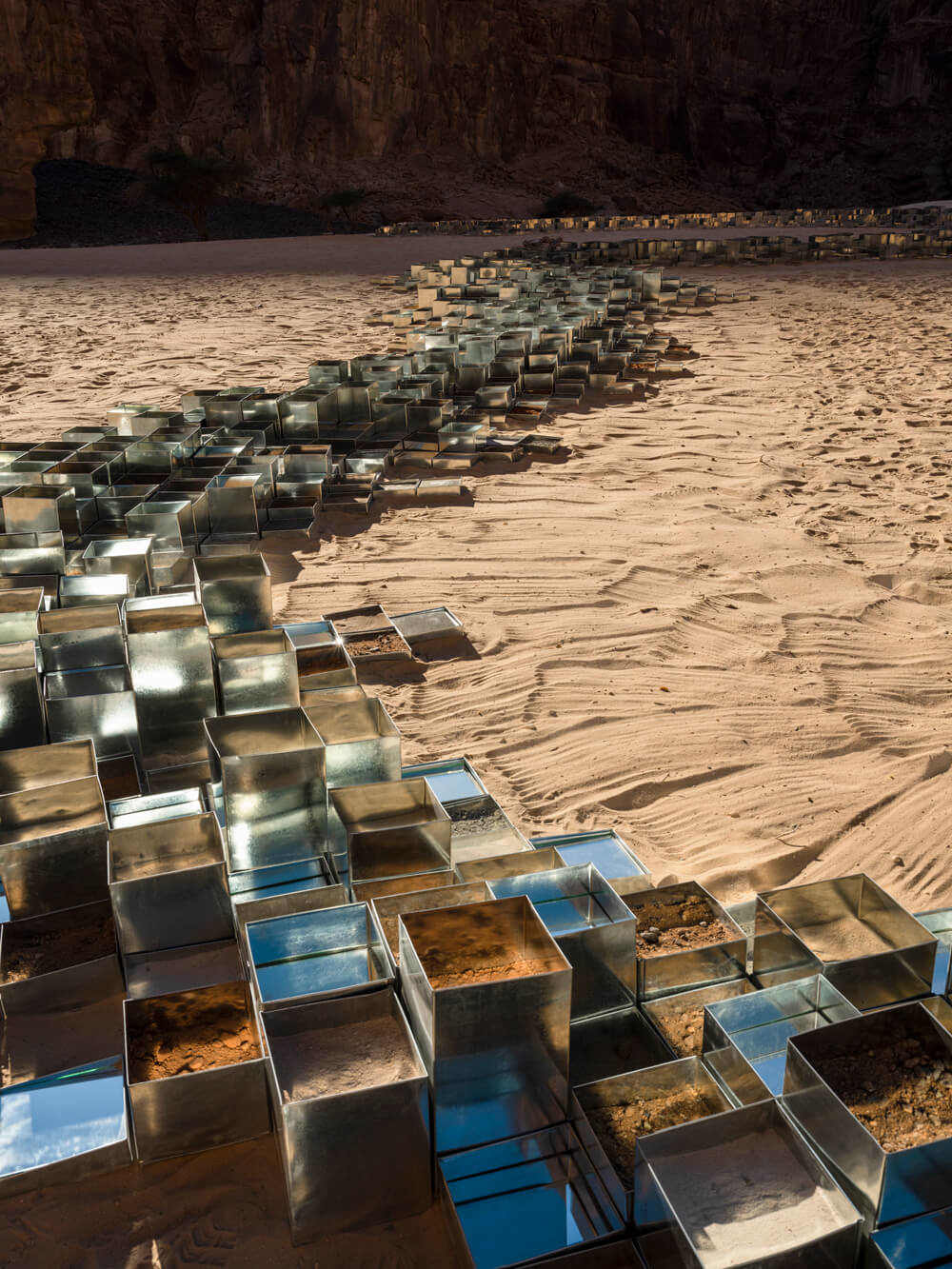
DXA Zahra Alghamdi
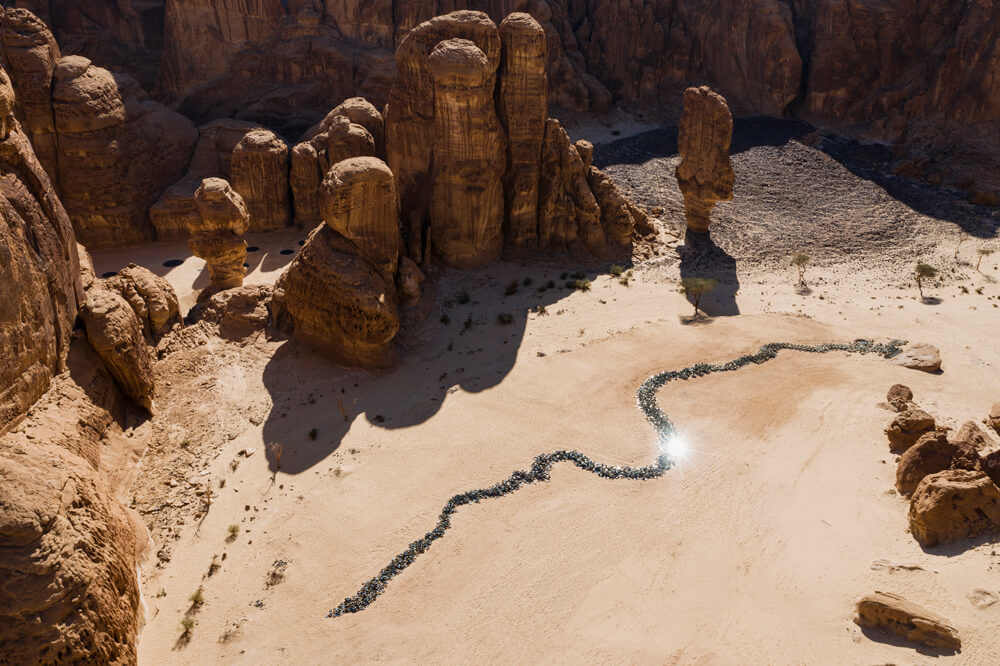
DXA Zahra Alghamdi
Observing the photographs of the projects ignites the observer’s associative imagination – from our spirit to the spirit of the artist in his extraordinary dialogue with the Al-Ala desert. And as a final treat, to sense the desert and the art created in it, watch the video below, it is an absolute must.
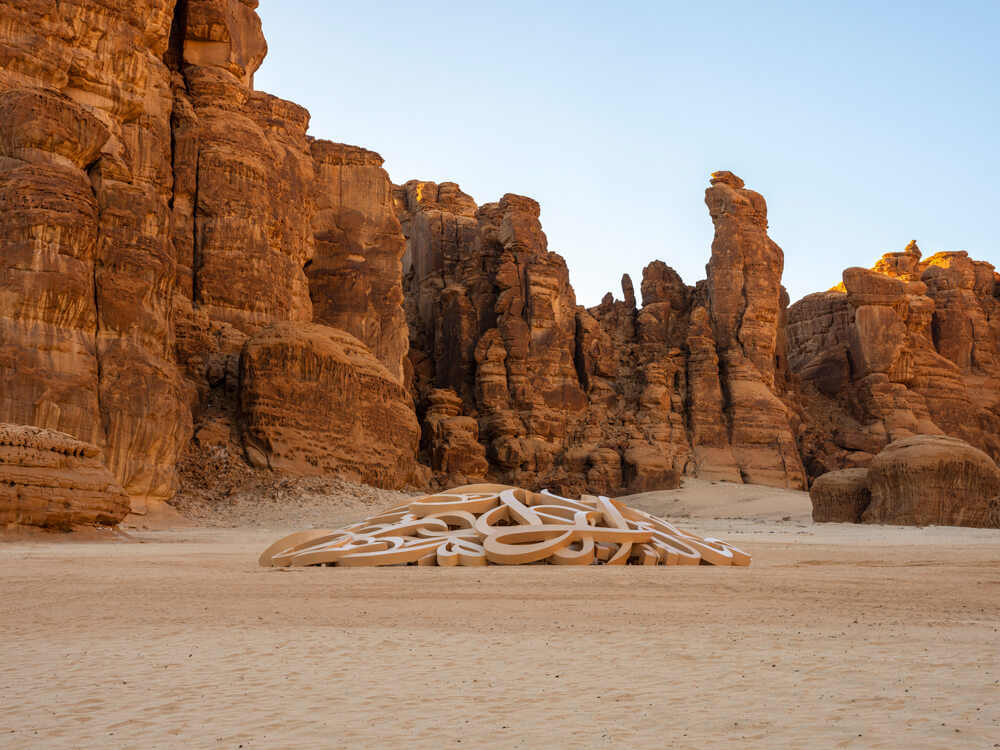
DXA El Seed
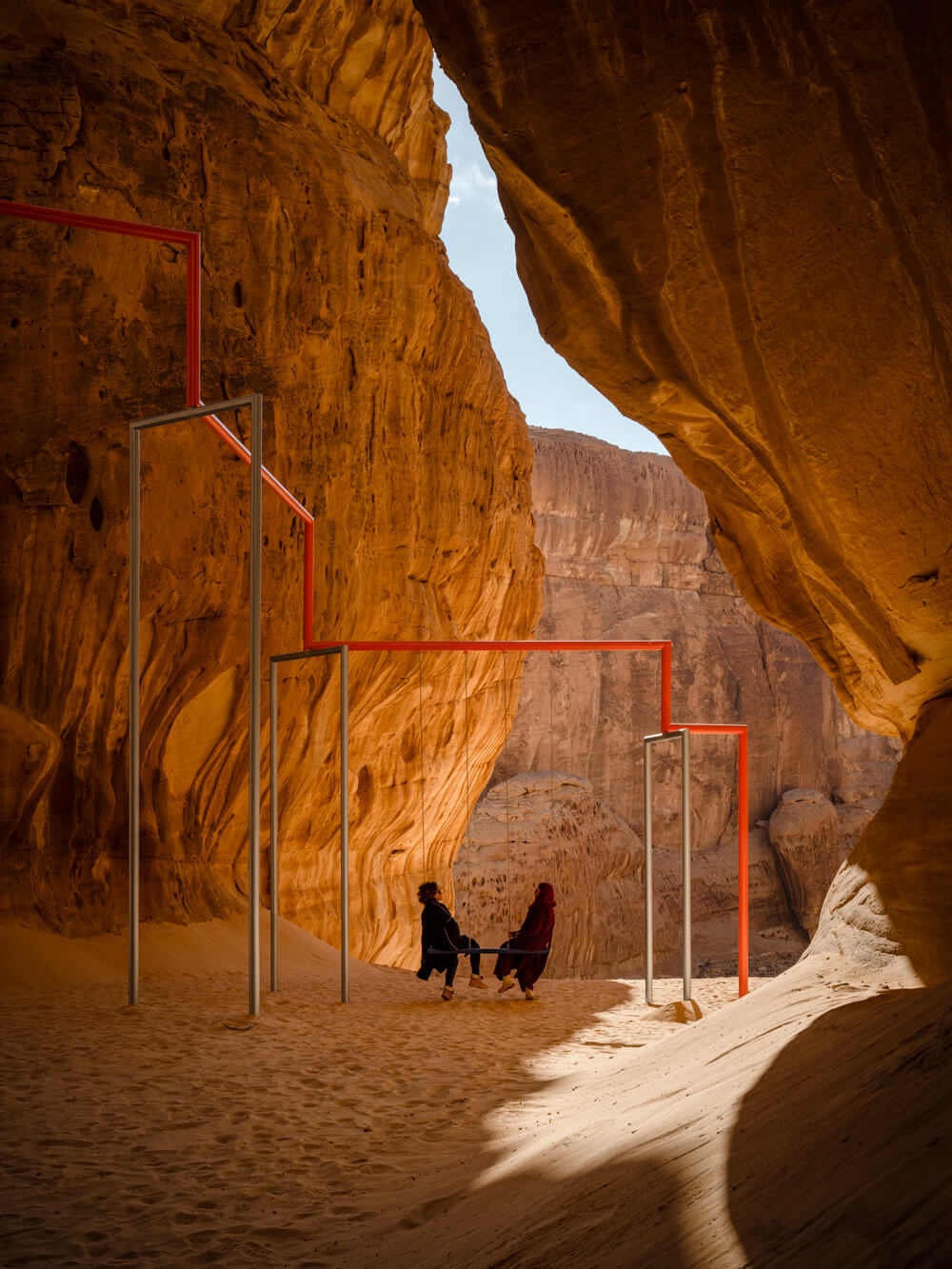
DXA Superflex
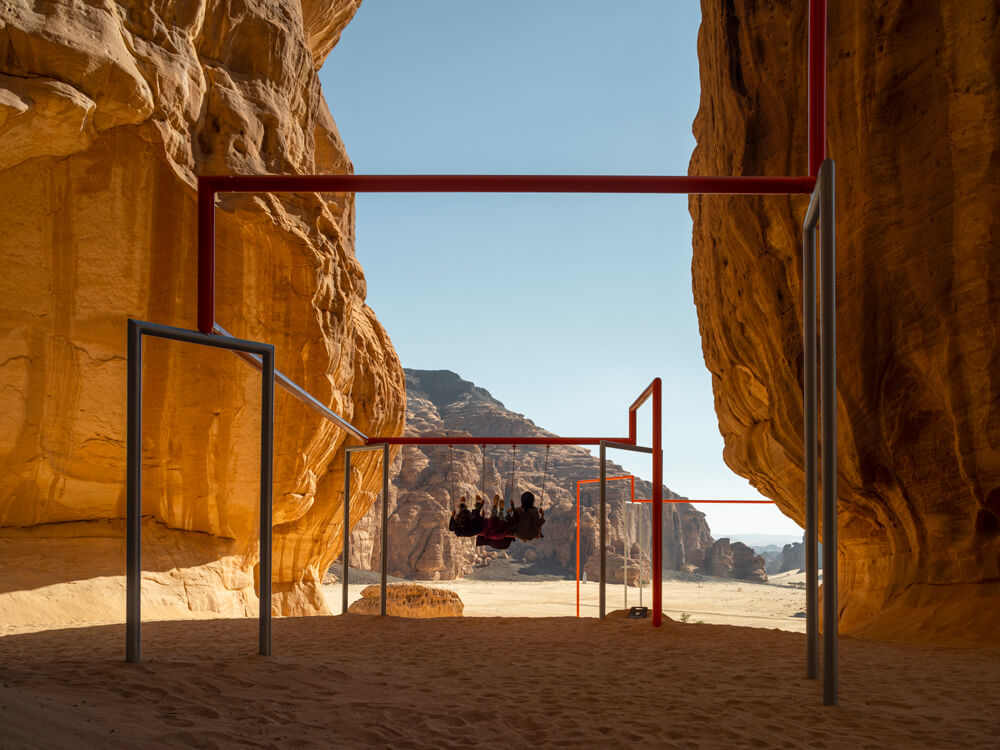
DXA Superflex



